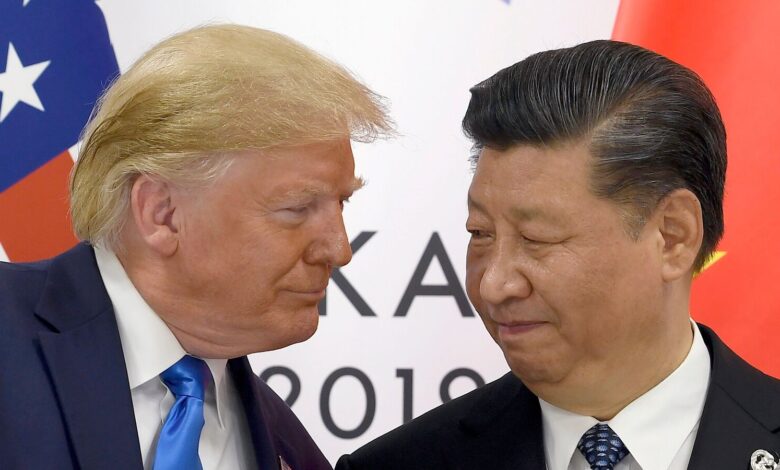
Policy outlook
In the coming month, several major central banks are poised to announce monetary policy decisions, with many facing a delicate balancing act—managing persistent inflationary pressures while navigating the uncertainties of US tariff policies.
The US Federal Reserve, Bank of England, and Bank of Japan are widely expected to keep interest rates steady. Meanwhile, the Reserve Bank of India (RBI) and European Central Bank (ECB) may consider rate cuts to stimulate growth amid stable inflation.
Read this | RBI’s double-barreled liquidity surge in May to force down lending rates
The US Federal Reserve is expected to hold rates steady as it weighs the potential economic fallout from the tariffs against the inflationary risks. The Bank of England, having eased rates in May to address growth concerns and softening inflation, may hold steady now but could resume easing by August. The Bank of Japan is likely to pause in June to assess tariff-related uncertainties but may begin rate hikes later as inflation pressures build.
Trade truce
After exchanging steep reciprocal tariffs, the US and China agreed to a 90-day pause in their tariff war, including reduced tariffs during this period. The truce, reached following high-level talks in Switzerland, marks a significant de-escalation after US tariffs on Chinese imports peaked at 145% and China’s tariffs on US goods reached 125%.
Currently, US tariffs on Chinese products average around 30%, while China’s tariffs on US goods stand near 10%. Prior to the agreement, China experienced a sharp drop in exports to the US in April, alongside a notable rise in shipments to ASEAN countries, suggesting efforts to sidestep US tariffs.
Read this | India caught in crossfire as Trump demands Apple shift manufacturing to US
While the terms of any final deal remain uncertain, this temporary truce has eased global tensions, with brokerages lowering the likelihood of a US recession.
Post-Brexit pact
Five years after formally leaving the European Union, the UK and the EU have unveiled their first major post-Brexit deal, signalling a strategic reset in their complex relationship.
Unveiled at a London summit led by Prime Minister Keir Starmer, the agreement covers trade, defence, energy, migration, and youth mobility, aiming to improve cooperation and ease tensions. The trade relationship between the UK and the EU has undergone significant shifts since Brexit. While the EU remains a key trading partner, accounting for around 41% of UK exports and 51% of imports in 2024, the UK has diversified its trade portfolio, with non-EU countries now receiving 59% of its exports.
Nonetheless, UK exports to both the EU and non-EU markets have declined sharply since Brexit, underscoring the urgency of securing trade agreements with the EU and other partners like India.
Read this | With India-UK FTA talks concluded, India to introduce global tendering for public procurement
However, since Brexit, the UK’s exports to both the EU and non-EU have declined sharply, pressing the need to strike trade deals with the EU and other countries like India.
Bond rout
The global bond market is facing a sharp sell-off, driven by a wave of fiscal concerns and a loss of confidence in long-term government debt.
Moody’s downgrade of the US credit outlook and renewed fears over soaring deficits—fuelled by Donald Trump’s tax plans—have triggered a broad-based reassessment of risk. Investors are not only exiting the US Treasuries but also long-duration bonds in major economies like Japan and Germany.
Yields on 30-year US bonds surged past 5% recently, while Japanese and German yields have also jumped. Structural shifts, such as reduced demand from Japanese insurers and looser fiscal policy in Europe, are compounding the pressure.
Also read | Why the bond market is unfazed by a 22-year-low yield gap
Investors now favour shorter-duration bonds, viewing them as safer in uncertain times. Meanwhile, emerging markets like India and China are defying the trend, with yields slipping, thanks to domestic stability and tighter capital controls.
Listing lift
Chinese battery giant CATL made a striking debut on the Hong Kong Stock Exchange, raising $4.6 billion in the largest global listing so far this year. Shares jumped over 16% from its listing price of HK$263 on the first day, highlighting strong investor demand for the world’s top EV battery maker, which supplies major automakers such as Tesla, BMW, and Volkswagen.
Holding a near 38% share of the global EV battery market, CATL plans to use the proceeds to accelerate its expansion in Europe. However, already listed in Shenzhen, CATL became entangled in escalating US-China tensions. The Pentagon designated CATL as a Chinese military-linked firm, and US lawmakers pressured Wall Street banks to avoid the listing, leading CATL to exclude US onshore investors entirely.
Also read | Ola’s battery cell ambition has run into a bump
This move marks a shift from an era when Chinese giants like Alibaba thrived on Wall Street on debut. CATL’s Hong Kong listing reflects a changing financial landscape, with mainland firms increasingly turning to Hong Kong for capital amid rising US regulatory scrutiny.
Policy outlook
In the coming month, several major central banks are poised to announce monetary policy decisions, with many facing a delicate balancing act—managing persistent inflationary pressures while navigating the uncertainties of US tariff policies.
The US Federal Reserve, Bank of England, and Bank of Japan are widely expected to keep interest rates steady. Meanwhile, the Reserve Bank of India (RBI) and European Central Bank (ECB) may consider rate cuts to stimulate growth amid stable inflation.
Read this | RBI’s double-barreled liquidity surge in May to force down lending rates
The US Federal Reserve is expected to hold rates steady as it weighs the potential economic fallout from the tariffs against the inflationary risks. The Bank of England, having eased rates in May to address growth concerns and softening inflation, may hold steady now but could resume easing by August. The Bank of Japan is likely to pause in June to assess tariff-related uncertainties but may begin rate hikes later as inflation pressures build.
Trade truce
After exchanging steep reciprocal tariffs, the US and China agreed to a 90-day pause in their tariff war, including reduced tariffs during this period. The truce, reached following high-level talks in Switzerland, marks a significant de-escalation after US tariffs on Chinese imports peaked at 145% and China’s tariffs on US goods reached 125%.
Currently, US tariffs on Chinese products average around 30%, while China’s tariffs on US goods stand near 10%. Prior to the agreement, China experienced a sharp drop in exports to the US in April, alongside a notable rise in shipments to ASEAN countries, suggesting efforts to sidestep US tariffs.
Read this | India caught in crossfire as Trump demands Apple shift manufacturing to US
While the terms of any final deal remain uncertain, this temporary truce has eased global tensions, with brokerages lowering the likelihood of a US recession.
Post-Brexit pact
Five years after formally leaving the European Union, the UK and the EU have unveiled their first major post-Brexit deal, signalling a strategic reset in their complex relationship.
Unveiled at a London summit led by Prime Minister Keir Starmer, the agreement covers trade, defence, energy, migration, and youth mobility, aiming to improve cooperation and ease tensions. The trade relationship between the UK and the EU has undergone significant shifts since Brexit. While the EU remains a key trading partner, accounting for around 41% of UK exports and 51% of imports in 2024, the UK has diversified its trade portfolio, with non-EU countries now receiving 59% of its exports.
Nonetheless, UK exports to both the EU and non-EU markets have declined sharply since Brexit, underscoring the urgency of securing trade agreements with the EU and other partners like India.
Read this | With India-UK FTA talks concluded, India to introduce global tendering for public procurement
However, since Brexit, the UK’s exports to both the EU and non-EU have declined sharply, pressing the need to strike trade deals with the EU and other countries like India.
Bond rout
The global bond market is facing a sharp sell-off, driven by a wave of fiscal concerns and a loss of confidence in long-term government debt.
Moody’s downgrade of the US credit outlook and renewed fears over soaring deficits—fuelled by Donald Trump’s tax plans—have triggered a broad-based reassessment of risk. Investors are not only exiting the US Treasuries but also long-duration bonds in major economies like Japan and Germany.
Yields on 30-year US bonds surged past 5% recently, while Japanese and German yields have also jumped. Structural shifts, such as reduced demand from Japanese insurers and looser fiscal policy in Europe, are compounding the pressure.
Also read | Why the bond market is unfazed by a 22-year-low yield gap
Investors now favour shorter-duration bonds, viewing them as safer in uncertain times. Meanwhile, emerging markets like India and China are defying the trend, with yields slipping, thanks to domestic stability and tighter capital controls.
Listing lift
Chinese battery giant CATL made a striking debut on the Hong Kong Stock Exchange, raising $4.6 billion in the largest global listing so far this year. Shares jumped over 16% from its listing price of HK$263 on the first day, highlighting strong investor demand for the world’s top EV battery maker, which supplies major automakers such as Tesla, BMW, and Volkswagen.
Holding a near 38% share of the global EV battery market, CATL plans to use the proceeds to accelerate its expansion in Europe. However, already listed in Shenzhen, CATL became entangled in escalating US-China tensions. The Pentagon designated CATL as a Chinese military-linked firm, and US lawmakers pressured Wall Street banks to avoid the listing, leading CATL to exclude US onshore investors entirely.
Also read | Ola’s battery cell ambition has run into a bump
This move marks a shift from an era when Chinese giants like Alibaba thrived on Wall Street on debut. CATL’s Hong Kong listing reflects a changing financial landscape, with mainland firms increasingly turning to Hong Kong for capital amid rising US regulatory scrutiny.
https://www.livemint.com/lm-img/img/2025/05/25/1600×900/Trump-Trade-Deals-0_1748148716065_1748148726928.jpg
2025-05-25 05:01:00










